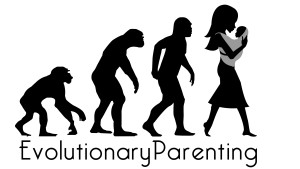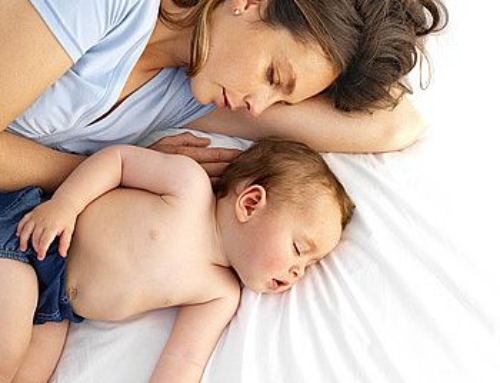“Parents used to have to stop their baby crying because if they didn’t, they’d all be eaten by wild animals, but we don’t live in that world anymore so isn’t that a rather outdated way of looking at parenting?”
~ Too many people to count, often in attempts to justify leaving children to cry
 I have heard the above mentioned time and time and time again. In our efforts to make it okay to leave children to cry, to not offer comfort in times of distress, we have decided that the only reason that parents previously did not do this was that it put everyone’s life at risk. I’ve read and heard others counter that babies don’t know their environment has changed and thus we ought to treat them similarly as if that will convince others not to use these methods.
I have heard the above mentioned time and time and time again. In our efforts to make it okay to leave children to cry, to not offer comfort in times of distress, we have decided that the only reason that parents previously did not do this was that it put everyone’s life at risk. I’ve read and heard others counter that babies don’t know their environment has changed and thus we ought to treat them similarly as if that will convince others not to use these methods.
I think everyone is thinking about it wrong. All wrong.
You see, the issue shouldn’t be about how our environment has changed, but rather why did such a seemingly maladaptive trait persist?!
Seriously, think about it. We all seem to be in agreement that a baby’s cries could put not only him or herself at risk, but also the lives of those around him/her. As such, this would classify it as “maladaptive trait” from an evolutionary stand point as it would decrease the chances of survival both at an individual level (baby doesn’t survive) and at a group level (puts others at risk). Evolution and natural selection should result in changes to this behaviour, especially over as long a time as humans have been walking the earth.
So we have to ask ourselves: Why does such a trait still exist?
The answer is that contrary to our thoughts of it as “maladaptive”, it is either neutral or adaptive. For this to be the case, there has to be something else that the trait results in that increases survival to counteract this maladaptive element of it that it can attract predators. As such, if we’re having to compare it to death by wild animal then the benefit must be pretty darn big to move the trait up from fully maladaptive to neutral or adaptive. That is, we have to look at this trait in terms of a cost/benefit analysis. Loud, wailing crying can attract predators that can kill us (maladaptive) so for it to survive, it has to do something that enables survival even more than this risk of death.
What are these possible benefits to the type of cry that human infants have?
For starters, it gets them the attention they need. People hear the cry and respond and not just out of fear of death but because human cries trigger something in us that makes us want to stop it. We as parents are hard wired to want to make sure these cries are soothed. In this sense we have co-evolved with our children to ensure that we complete our pivotal role of responding to their cries; our own urge to make it stop also highlights just how important this responsiveness is to our infant. We feel the urge to stop anything we are doing in order to respond, and responsiveness is also a means to alleviate our own distress which is why parents doing cry-it-out often speak of how heartbreaking and difficult it is for them as well.
In providing this soothing, we are acting in a way to help our children survive and thrive. Responsiveness reduces stress on the developing brain, it provides touch which is essential to well-being, and it may even be through nursing for comfort that infants obtain more nutrients to become stronger and healthier. In short, responsiveness = healthier, heartier baby.
 Additionally, given the regulatory role that parents play in infant physiology, the type of cry an infant has that results in parents feeling anxious to stop it may also ensure that the infant is kept close more often (as this proximity is associated with less crying overall). This proximity not only keeps baby from being eaten by wild animals, but can help him/her survive via the parent’s ability to help regulate things like temperature, heart rate, breathing, etc., also known as physiological synchrony. The physiological synchrony between caregiver (often mother) and child is quite possibly a huge boost to our survival and crying may be one trait that keeps us close to our babies to ensure that synchrony and the benefits it provides continue.
Additionally, given the regulatory role that parents play in infant physiology, the type of cry an infant has that results in parents feeling anxious to stop it may also ensure that the infant is kept close more often (as this proximity is associated with less crying overall). This proximity not only keeps baby from being eaten by wild animals, but can help him/her survive via the parent’s ability to help regulate things like temperature, heart rate, breathing, etc., also known as physiological synchrony. The physiological synchrony between caregiver (often mother) and child is quite possibly a huge boost to our survival and crying may be one trait that keeps us close to our babies to ensure that synchrony and the benefits it provides continue.
So here we are today with infants who cry that loud, attention-grabbing cry. Infants who do this and expect a response from their parent. Not because they might get eaten by wild animals, but because for whatever reason, it has helped us as a species thrive and move forward. No change in environment is going to change that.






Another great article with some fresh aspects as to why babies need to be responded to. I get so frustrated when I hear parents say how hard it was to let them cry, and I think yeah that is because you should not be letting them cry!
Your explaining the cost/benefit of the trait is the answer. Many of us died at the fangs of the predator, but the nurturing of the surviving offspring eventually changed our environment. I think that our current response to the crying is the same primitive one; quiet him/her lest the beast hears.
I think it’s only the human babies who cry. So, here’s two additional variables to consider: Human babies are particularly vulnerable for a particular long time. Human mothers don’t have a fur the baby can cling to.
If bonding is the key perhaps babies need that additional “bonding device” because they are so vulnerable and their mothers couldn’t carry them along everywhere they went.
And next I’ll try to find out why women scream although I’m pretty sure I already know it.
[…] are not built to let their children cry. There is a reason the sound pushes us […]